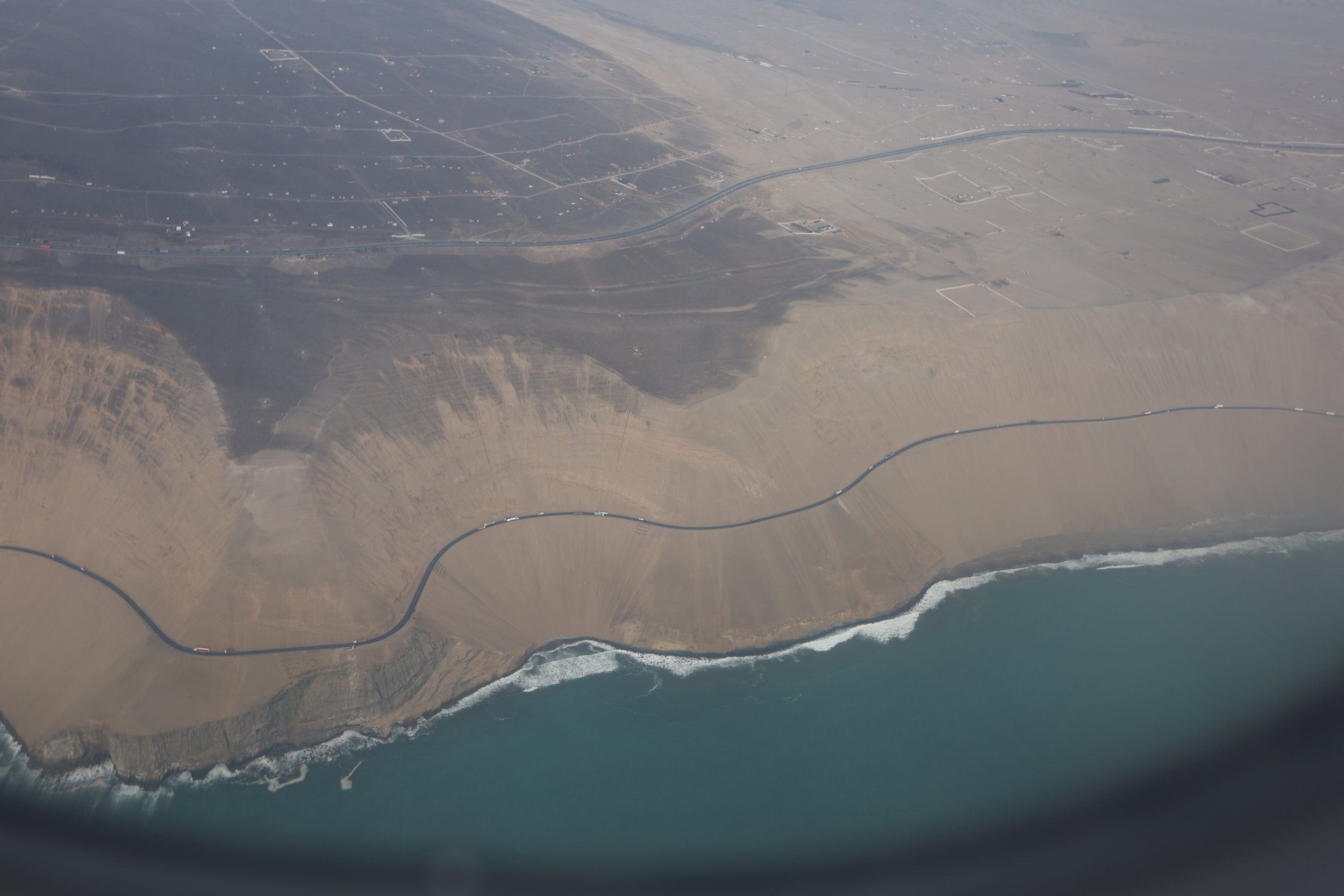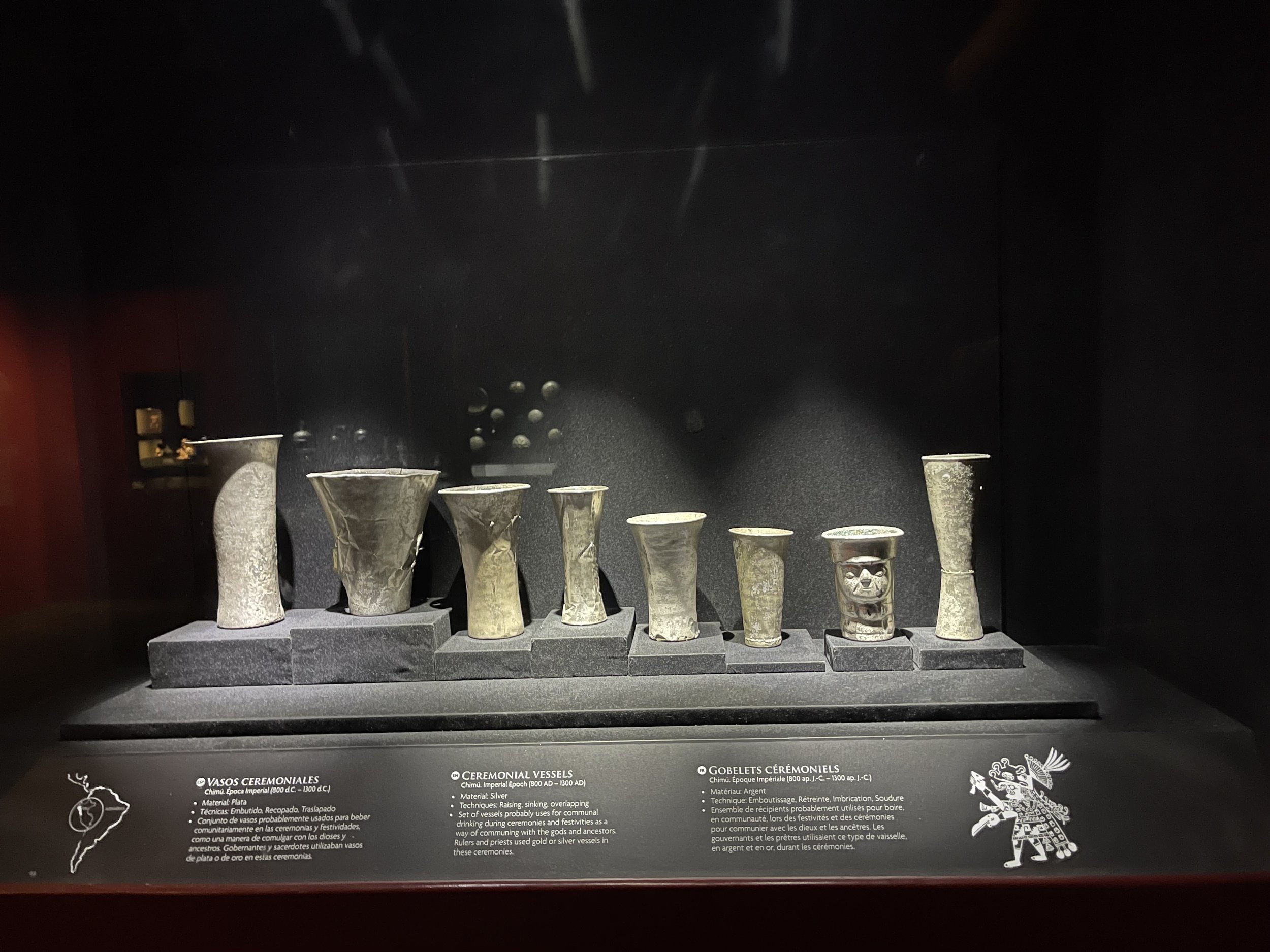Lima, Peru
Someone is in ceviche heaven
From the air, N. was amazed by the fact that unlike the far away Andes mountains, the area around Lima seemed to be all desert.
After arrival, we played innie-minnie-miney-moe, chose a restaurant just a couple of blocks away, and the classics of Peruvian cuisine — ceviche, lomo saltado, chicha morada — were delicious.
***
Our walking tour began at 1 pm, but we had a heck of a time trying to catch a taxi. Was it because it was a Sunday?
We arrived in front of the Church of La Merced in Lima’s Centro Historico to meet the guide and our group — a couple from Canada, another from the US, a trio of ladies from the Netherlands, and we. I have no idea why N. loudly announced our hometown.
The tour meandered around the old historic center of town: Lima Main Square, the Cathedral, the Archbishop’s Palace, the City Hall. We walked into smaller streets to see some of the eclectic architectural styles — colonial, baroque, deco — sometimes in the same block. It was a pity that the tour did not allow us time to enter any of these buildings.
According to the guide, the statue of Francisco Pizarro and his horse keeps getting moved around town. Could it be because no one wants it near them? Or because the government needs to put some workers on payroll?
We also went by the old Post Office building and the San Francisco Convent and Catacomb Museum and the old city walls. The Rimac River seemed fast and filthy. The shanty towns below the Cerro San Cristobal looked precariously situated but colorful from afar. We had an overpriced beer by the river and called it a day.
I’m all for supporting local guides through these tours, but today’s and the one we went to in Bogota were starting to give us second thoughts about these efforts. N. always fell behind because he was busy taking pictures and missed all the historical tidbits anyway. Today, the heat and humidity, the loudness in the streets vis-a-vis the guide’s soft voice, and the large area covered made it a bit of a drag — and I think the only thing I learned were the elements in the shield of the Peruvian flag: the vicuna, a tree (but not which one exactly!), a cornucopia.
We took a taxi back to the hotel and collapsed in the room.
Dinner at an Italian restaurant was surprisingly lovely. Oh, that’s right: the guide said that after the Chinese and the Japanese, Italians were the third largest minority in Peru.
***
While N. had some work to do, I went to the hotel gym for a 2 mile run and some weight training. I felt awfully out of shape.
We had lunch reservations for a nikkei restaurant, a local fusion of Peruvian and Japanese cooking; it involved quality fish, interesting Peruvian ingredients, and yes, ceviche.
So fortified, we walked down to Playa Waikiki whose name was purely aspirational — it had absolutely nothing in common with its more famous namesake in Hawaii — except perhaps for the Pacific Ocean, I guess. The tiny strip of black rocks on the beach was attacked by the oncoming waves, which in turn rolled back the pebbles, making loud noises as they were pulled back into the sea. How were people just lying on those rocks on thin towels?
To the left of the staircase were little tents with names of different surf schools. It was strange to think of each little tent, with random surfing boards and draped with wetsuits, as proper “schools” but what can a surfing school possibly need more than ocean waves anyway?
N. insisted on picking up some of these beach rocks for his sand collection, which meant that I was carrying “goddam rocks” (family joke) on my backpack. We walked back for some coffee and desserts and a bathroom (please!) and then walked back to the waterfront by the Love Park to wait for the sunset. Up and down the Malecon de Miraflores were families, couples and the odd old man in his scooter blasting songs and stopping to chat up people, including me for some reason.
Dinner was at a seafood restaurant, recommended by our hotel manager, for its ceviche… again. At this rate, N. and I will poop fishes.
***
Huaca Huallamarca, an ancient archeological site, sat smack dab in the middle of some apartment buildings in a quiet neighborhood. We got to the top of the pyramid structure and came down with heatstroke symptoms.
Upon arrival at the Larco Museum, we went to the cafe first to cool down and escape from the heat, and were surprised by how pretty the museum grounds were — really a balm to the soul. Going up the walls and up the buildings were bougainvillea vines in pinks, reds, oranges. Artifacts were presented beautifully, though, interestingly, the display cases had contextual explanations of the history and culture of Peru, but did not identify items individually.
On the first floor, through a separate entrance, the collection of erotic art offered an interesting perspective on ancient understandings of life.
***
We spent the morning making some plans and catching up on writing and — even from the road — taxes.
In the afternoon, we drove to the Place of Memory, Tolerance and Social Inclusion Museum (LUM). We could have gone to the Museo de Arte de Lima (MALI) or to the Pre-columbian Textile Museum (AMANO), but I had read a review for LUM and it had sounded like a good idea to learn about more modern events of Peruvian history — the internal civil conflict in Peru dates from the 1980’s to the early 2000’s. For the record, the place lists 5,741 reviews, at an average of 4.6 stars.
I have no idea how it managed such stats, but there’s got to be a better way to spot such review inflation.
The building was situated awkwardly enough — between a busy highway and the cliffs that will in about twenty year’s time slide right into the Pacific Ocean — so our taxi dropped us off in what looked like an entrance of the museum but turned out to be an abandoned city sports complex close by.
We consulted our maps and walked around the block to a Brutalist building teetering on the edge of a cliff that had been carved into a hillside that looked very much like it was build by the ancient Incas — it had a similar composition as the Huaca Hallamarca, with round rocks that looked as if they had been slapped together with mud and spit.
Inside the museum, all the displays were only in Spanish, so I suspect that N. was secretly relieved from the burden of having to go through the exhibits carefully. No hablo Espanol! With my limited Spanish, I gathered that the displays were mostly chronological, beginning with the founding of the Sendero Luminoso group by a university professor with communist ideas. As visitors were guided through the upper floors, we saw displays that noted the geographical extent of the warfare, the roles and effects on women and families, the testimony of relatives of whose who “disappeared” in the violence, the eventual capture of the communist leader.
(The museum, however, appeared to be a governmental project that vilified the ideology, recruitment, and violence of the Shining Path without any context to its own complicity in the struggle. Perennial lesson: winners write history.)
The museum exit led to the roof of the museum that faced the Pacific Ocean.
From there, we walked along the Parque Bicentenario de San Isidro and to the Malecon Godofredo Garcia. It was nice to see these public spaces being enjoyed by couples, families, friends, and even dogs. Many came with food and snacks, to unwind and enjoy the sunset.
We walked a couple of blocks away for dinner, for a meal that included coconut ceviche, beet salad, and paiche, an Amazon river fish (an online search for the fish led to incredible pictures).
Gracias y Adios, Lima!
***

















































